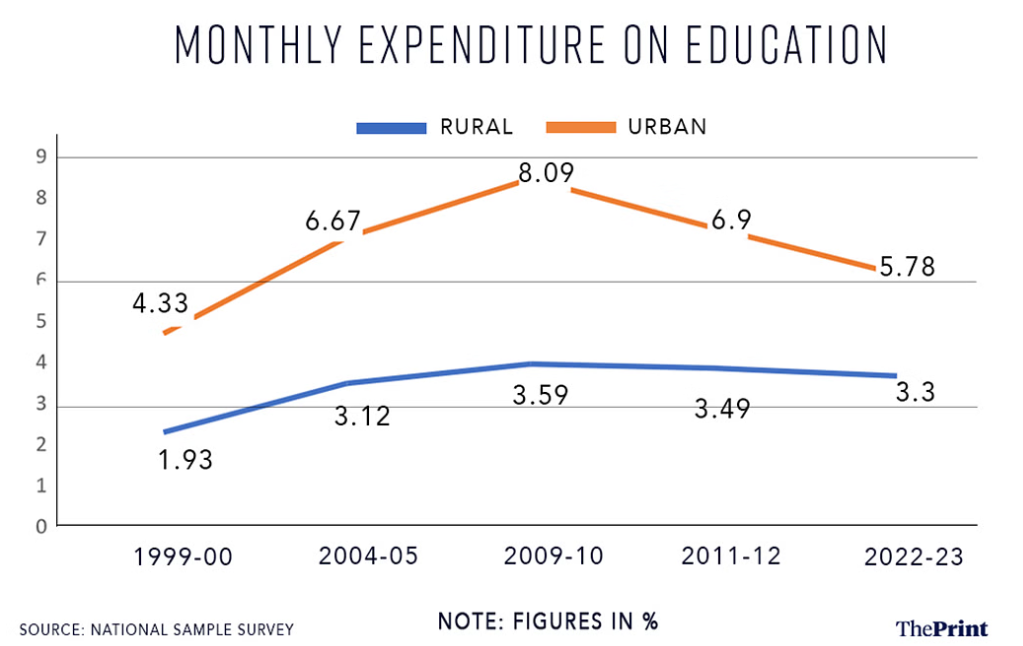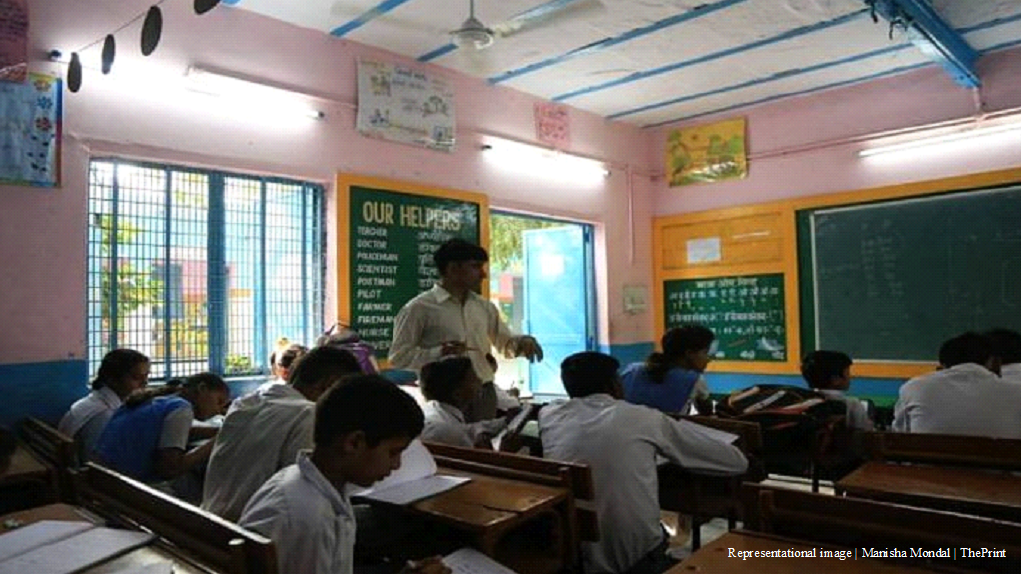Household expenditure on education dropped after 2010. Three ways to increase investment
17 Apr 2024
Opinion: Palash Baruah and DL Wankhar.
In communities where education is given greater importance & viewed as a gateway to success, households are more likely to allocate a larger portion of income toward educational expenses.
Education is the cornerstone upon which nations build their future. It is the bedrock of social and economic growth at the macro level, leading to individual empowerment and social stability. In India, a country with a large population and diverse socioeconomic landscape, understanding the trends in household expenditure on education provides crucial insight into the household’s contribution and participation in building and enhancing human capital.
Toward this, we refer to the National Sample Survey (NSS). The outcome of the surveys has served as one of the barometers for gauging household expenditure trends across rural and urban India. A close examination of the data from the NSS rounds spanning from 1999-2000 to 2022-2023 unveils an intriguing narrative of fluctuations and patterns in education spending. The survey on education spending by households covers expenditure on books, journals, newspapers, periodicals, library charges, stationery and photocopying charges, tuition and other fees, private tuition/coaching centre expenditure, and other expenses like fees for enrolment in web-based training etc.
Ascending trajectory
The turn of the millennium witnessed a significant uptick in household expenditure on education. According to data from the 55th round of NSS (1999-2000), rural households allocated 1.93 per cent of their expenditure towards education, while urban households earmarked 4.33 per cent—almost 2.5 percentage points difference. Over the subsequent NSS rounds, this allocation exhibited a commendable upward trajectory. By the 66th round of NSS (2009-2010), the expenditure had swelled to 3.59 per cent for rural households and 8.09 per cent for urban households, with a 4.5 percentage points difference.
Leaving the rural-urban divide gap aside, the rise in household expenditure spending on education could be indicative either of a growing household commitment to higher spending towards education or the rising education cost eating into household expenditure or both factors playing in tandem.
This period also marked a notable phase of prioritisation of education expenditure, driven by various factors including increasing awareness of the role of education in socio-economic advancement, policy initiatives aimed at universalising education, and rising aspirations among the populace.

Plateau and decline post-2010
The upward trend in education spending by households plateaued post-2009-2010, followed by a gradual decline in subsequent years. The 68th round of NSS (2011-2012) revealed a decrease in education expenditure, with rural households’ allocation falling marginally to 3.49 per cent and urban households’ spending falling drastically to 6.9 per cent. The most recent data from 2022-2023 paints a more sobering picture. Rural households allocated 3.3 per cent of their expenditure to education, while urban households dedicated 5.78 per cent. This downward trend raises pertinent questions.
The decline in household spending on education post 2009-10 requires further analysis. Whenever the unit-level data is made available in the public domain, a more in-depth analysis will be forthcoming on the wavering behaviour of education spending by households.
Interpreting trends
Interpreting the trends in household expenditure on education necessitates a comprehensive understanding of the multifaceted factors influencing the spending. Since the survey reflects the “out-of-pocket expenditure” of households, the numbers show that the economic conditions of households as well as the cost of education exert a significant influence on spending habits. It also shows the preference of households for certain educational pursuits.
Government policies and initiatives also play a pivotal role in shaping education expenditure patterns. Increased investment in education infrastructure, scholarships, and subsidies/reimbursements of costs tend to ease “out-of-pocket” spending on education. Conversely, shifts in policies or austerity measures may dampen government expenditure levels and put stress on households as they have to adjust their budgets in response to changing circumstances.
Moreover, societal attitudes towards education, deeply rooted cultural norms and values significantly influence expenditure patterns. In communities where education is accorded greater importance and viewed as a gateway to success, households are more likely to allocate a larger portion of their income towards educational expenses.
Toward inclusive education
As India aims to harness its demographic dividend, it is imperative to ensure equitable access to quality education across all strata of society. Addressing the existing disparities between rural and urban areas necessitates targeted interventions aimed at enhancing accessibility and affordability in underserved regions. The varying patterns in household spending on education underscore the urgent need for collaborative action in constructing a more inclusive and robust educational framework.
First, substantial investments are required in educational infrastructure to bridge the gap between rural and urban areas. This entails developing schools, colleges, and vocational training centres, especially in underserved regions. The availability of infrastructure impacts household spending on education.
Second, policy initiatives to ease the financial burden of education on families, such as scholarships, fee reductions, and income-based loan programs can improve accessibility and encourage wider participation in education.
Finally, involving local communities, parents, and stakeholders in the educational process fosters a sense of ownership and responsibility, thereby maximising education spending and fostering greater social cohesion.
While the fluctuating trends in household expenditure on education present a complex narrative, they also offer valuable insights into the evolving dynamics of education in India. By addressing the underlying challenges and leveraging opportunities for reform, India can chart a path towards a more inclusive, equitable, and affordable education system, thereby unleashing the full potential of its human capital. Higher investment in education should not only be a moral imperative but also a strategic way forward to secure a prosperous and sustainable future.
Palash Baruah is Associate Fellow at National Council of Applied Economic Research (NCAER), New Delhi and DL Wankhar is a retired officer of the Government of India. Views are personal.
Published in: The Print (online), 17 Apr 2024







